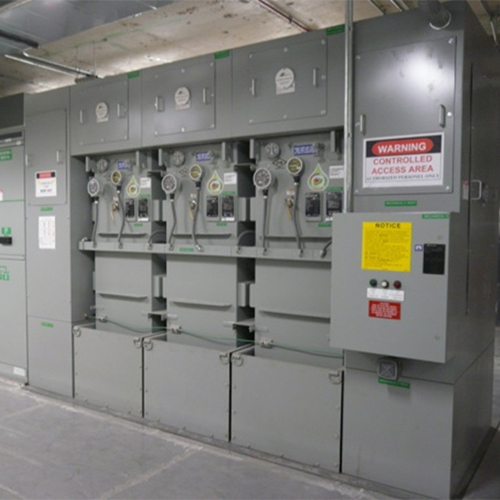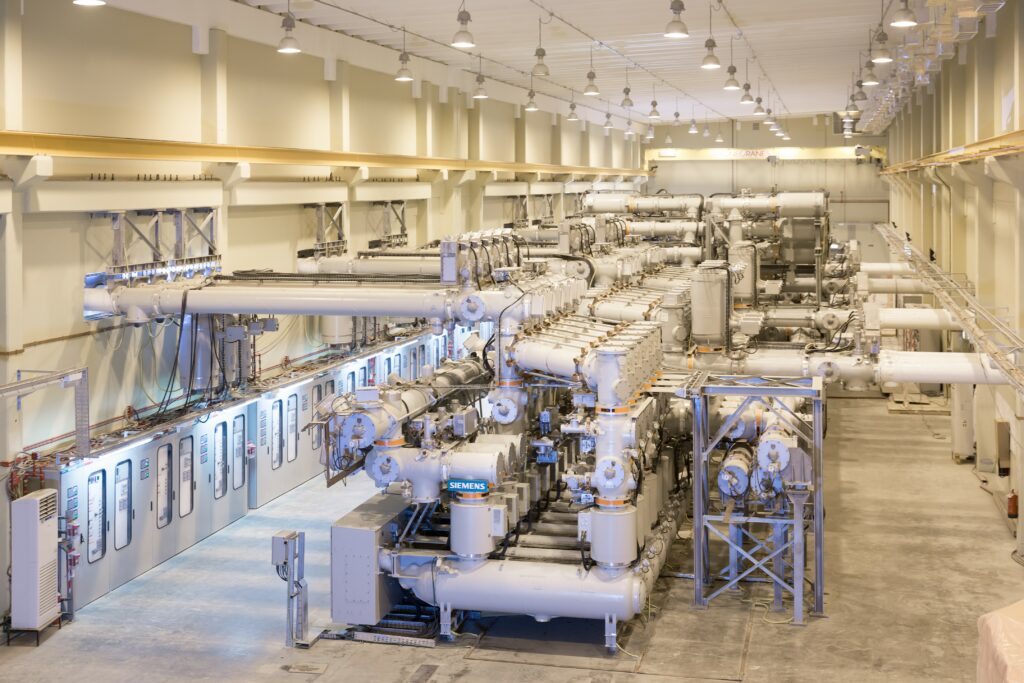An indoor substation is a type of electrical substation that is typically located inside a building. The main purpose of an indoor substation is to distribute electricity from the utility company to the customer’s premises. There are several factors to consider when designing an indoor substation, such as the amount of power to be distributed, the space available, and the environmental conditions.
11KV/400V 2.5MVA Indoor Distribution Substation 3D Modeling
- Design the indoor substation per the specific needs of the customer
- Select the proper equipment for the application and design layout
- Coordinate with other engineers to finalize drawings and specifications
- Ensure that all safety regulations are met during the design process
Indoor Substation Pdf
An indoor substation is a type of substation in which all or most of the equipment is housed within buildings. Indoor substations are typically used for voltages below 72 kV.
Indoor substations have several advantages over outdoor substations, including better protection from weather and decreased noise levels.
Indoor substations also require less space than outdoor substations, making them more suitable for densely populated areas. However, indoor substations can be more expensive to construct and maintain than outdoor Substations.
Substation Room Requirements
As technology advances, the requirements for substation room design continue to evolve. Utilities must consider many factors when determining the size and layout of their substation rooms. The following are some important considerations for substation room design:
1. Equipment type and quantity – The type and quantity of equipment housed in the substation will dictate the size of the room required. For example, a typical indoor air-insulated switchgear (AIS) installation requires about 100 square feet per unit.
2. Cable entry/exit points – The location of cable entry/exit points will impact the layout of the room.
It is important to allow enough space around these points for proper cable termination and inspection.
3. Ventilation – Proper ventilation is essential for many types of electrical equipment housed in substations, such as transformers and circuit breakers. Adequate ventilation helps ensure proper cooling and prevents potentially hazardous conditions such as fire or explosion.
4. Lighting – Appropriate lighting levels must be maintained in substations to facilitate safe operation and maintenance activities. Natural light should be used whenever possible to minimize energy consumption.
Electrical Substation Design Calculations Pdf
In an electrical substation, the design calculations for the equipment and structures are based on the system voltage, the short-circuit current, and the maximum continuous current. The system voltage is the highest voltage that will be applied to any point in the substation. The short-circuit current is the highest current that can flow through any conductor in the substation.
The maximum continuous current is the amount of current that can flow through a conductor without causing damage to the conductor.
Substation Design Standards Pdf
As the North American electric grid continues to age, the need to maintain and upgrade substations becomes more critical. According to the National Electric Reliability Corporation (NERC), there are over 5,800 high-voltage substations in the United States alone. Many of these substations were built in the 1950s and 1960s and are nearing the end of their useful life.
To ensure that new and upgraded substations meet current standards, engineers must design them according to strict NERC guidelines. This document, known as PRC-024-2, establishes requirements for equipment ratings, clearances, buswork arrangements, cabling, grounding, lighting, control rooms, security fencing, and other aspects of substation design.
While some may view PRC-024-2 as a burden, it is actually a valuable tool that helps ensure safe and reliable operation of our nation’s electric grid.
By following these standards during construction or upgrades, engineers can be confident that their substations will meet all current safety and performance requirements.

Credit: www.eaton.com
How to Design Electrical Substation?
There are many considerations that go into the design of an electrical substation. The first step is to determine the power requirements of the area to be served by the substation. The next step is to select a site for the substation.
The site must have enough space to accommodate all of the equipment needed for the substation, as well as space for future expansion. Once a site has been selected, the next step is to design the layout of the substation. This includes deciding where all of the equipment will be placed and how it will be interconnected.
How is a Substation Design?
A substation design is a critical component of any electrical grid. The substation will take the place of an existing one or be designed as part of a new project. Its purpose is to supply electricity to customers by connecting them to the main transmission lines.
It also helps ensure the stability and quality of the power supplied.
There are four main types of substations:
– Transmission
– Distribution
– Generation
– Substations for special purposes such as traction, mining, etc.
The type of substation required will be dictated by its intended purpose within the grid. All substations must have a control room where operators can monitor and manage equipment. This is typically located in a secure area within the substation perimeter fence.
In order to function properly, a substation must have several key components:
– Transformers – used to change voltage levels so that electricity can flow between different parts of the grid without damaging equipment or causing blackouts. A transformer consists of coils of wire wrapped around an iron core.
When electricity flows through the primary coil, it creates a magnetic field that induces voltage in the secondary coil; this process increases or decreases voltage depending on whether the transformer is “step up” or “step down” type. Transformers are rated according to their capacity (measured in MVA) and voltage level (kV). For example, a 500 MVA, 132/11 kV step-down transformer would be used to connect a high voltage transmission line (132 kV) to a lower voltage distribution line (11 kV).
– Circuit breakers – these are devices that open and close circuits automatically in order to protect equipment from damage caused by overloads or faults (short circuits). There are two types of circuit breakers commonly used in substations: air blast and oil circuit breakers. Air blast circuit breakers use compressed air stored in tanks to extinguish arcs when opening or closing circuits; oil circuit breakers use oil stored in reservoirs for this purpose. Both types require regular maintenance due to their complex mechanical nature; however, air blast circuit breakers require more frequent servicing than oil circuitbreakers because they rely on compressors which can fail over time due to corrosion and other factors.- Disconnect switches – these devices physically disconnect sections of conductor so that repairs can be carried out safely without having live wires exposed.
What Should I Consider in Substation Design?
In substation design, there are many factors to consider in order to create a safe and efficient system. The first step is to identify the purpose of the substation, which will help determine the necessary equipment and configuration. The next step is to conduct a site analysis, taking into account factors such as terrain, climate, and surrounding infrastructure.
Once the site has been selected, the substation must be designed with consideration for future expansion. This includes planning for adequate space, power supply, cooling capacity, and cable routing. Finally, all safety hazards must be identified and mitigated in the design process.
What is an Example of an Indoor Substation?
An indoor substation is a power substation in which the main equipment is housed inside a building. The building may be constructed of fire-resistant materials and have special ventilation, cooling and insulation arrangements to protect the equipment from the environment outside.
The main reasons for using an indoor substation are:
– To avoid the effects of weather on equipment performance.
– To reduce noise levels from the equipment.
– To provide increased security for the equipment against vandalism or theft.
Conclusion
An indoor substation is a type of substation that is typically used in urban areas. Indoor substations are usually located in buildings or underground. The main advantage of an indoor substation is that it takes up less space than an outdoor substation.
Another advantage of an indoor substation is that it can be more easily monitored and maintained than an outdoor substation.



